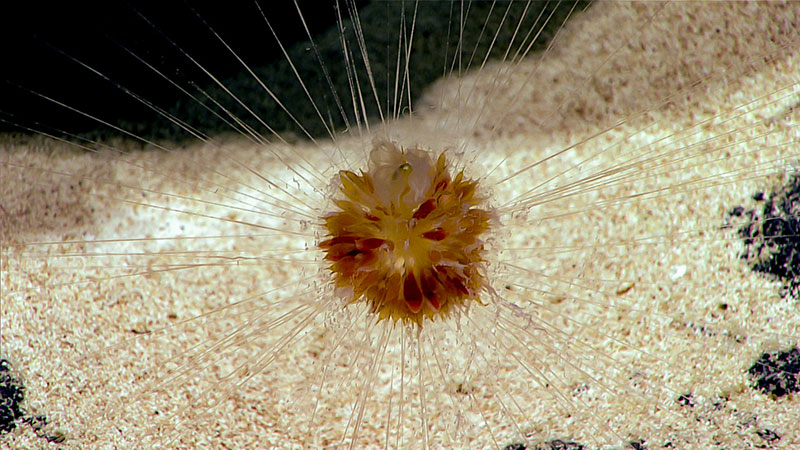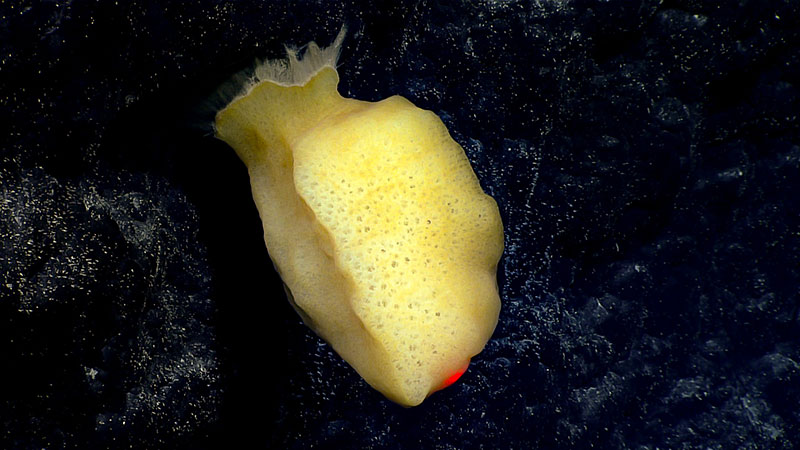-

This dandelion siphonophore is the first we have observed on this expedition. Found at approximately 2,530 meters (8,300 feet), we were able to see the feeding tentacles extended around the animal like a spider web as well as the pulsating nectophores, found just below and around the “float,” which helped to keep the central body suspended. Image courtesy of the NOAA Office of Ocean Exploration and Research, 2017 Laulima O Ka Moana. Download larger version (jpg, 1.7 MB).
-

A likely new yellow species of pheronematid, possibly Poliopogon, sponge was observed during the final minutes of the dive at approximately 2,515 meters (8,250 feet) depth. Image courtesy of the NOAA Office of Ocean Exploration and Research, 2017 Laulima O Ka Moana. Download larger version (jpg, 1.3 MB).
-
While most sponges are filter feeders, this sponge, seen during exploration of Wetmore Seamount, actually uses spines to capture tiny food. Video courtesy of the NOAA Office of Ocean Exploration and Research, 2017 Laulima O Ka Moana.. Download larger version (mp4, 23.7 MB).